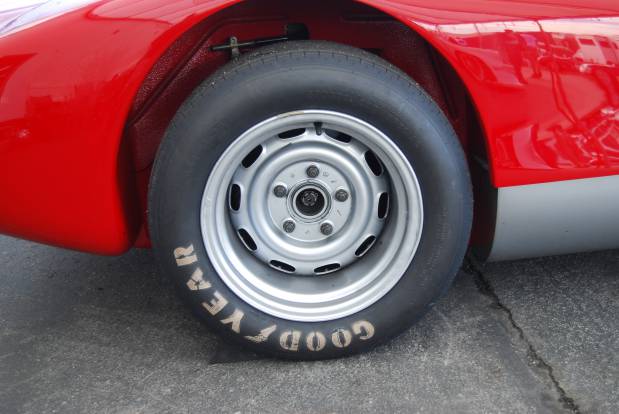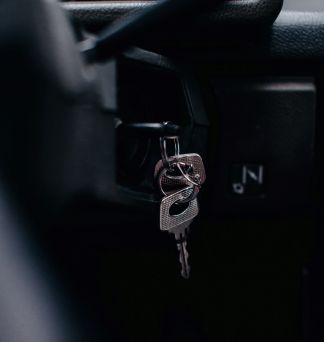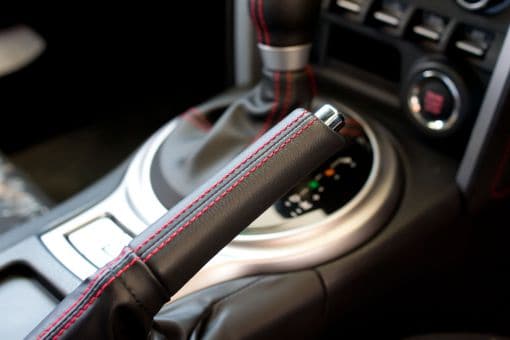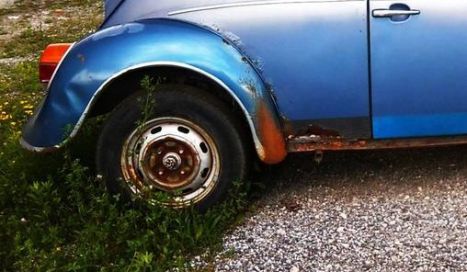You leave your car alone for some time, but unlike you, your car isn’t for the better after catching some R&R. Your rear wheels are locked up after you let your car sit, whether its for 3 days or 6 months! This can be extremely frustrating, but don’t worry too much! There are a couple of easy ways you can solve this problem and get your car back in shape in no time.
Why are my rear wheels locked up after sitting?
The main contributor to your rear wheels being locked up after they’ve been sitting for a while is rust. Rust can enter into the mechanical parts of the wheel and cause the automatic braking system to seize up. There are a few ways you can ease the tension and get your wheels to unlock.
However, if it’s your steering wheel instead of the rear wheels that are locked up, you might want to check out our article on that separate issue here.

Table of Contents
Top Solutions for Rear Wheels Locked Up After Sitting
Here are some of the best solutions for what to do when you’re faced with locked rear wheels.
Please note that we have listed out these solutions in order of how you should approach them. Start with Solution 1 and work your way up. We started with the most simple of strategies that don’t take any effort, and then listed out the more robust and heavy-duty strategies that require tools and skills.
Don’t skip any of the solutions as you might make the mistake of attempting a difficult procedure when the problem could’ve been solved with an easier strategy.
Solution #1: Stutter the car
Just like tech support will tell you to switch your laptop on and off, we’re telling you to stutter the car for a bit. It might sound pointless, but this can really help loosen up the friction that’s trapped and help the wheel ease out a bit.

How do you stutter the car? Shift your car into gear and gently drive back and worth a few inches. It’s easier to do than you would think.
This works in some cases, and we recommend it first because it takes the least effort. However, if it hasn’t helped the wheels loosen up, move on to the next solutions.
Solution #2: Engage the handbrake
Your handbrake actually has a connection to the brake switch. In fact, in one of the preventive measures to avoid your rear wheels being locked up after sitting, we recommend not leaving your car with the hand brake.

Try to engage and disengage the handbrake a couple of times to see if this helps in loosening up the rear wheels. What happens is the brake calipers can momentarily lose their grip when you engage and disengage the handbrake, and this can kickstart your rear wheels into motion.
If this doesn’t work, you likely have a larger issue, such as rust. Try the next solutions for help on how to deal with that.
Solution #3: Hammer your wheels
This might sound like something you’d do out of frustration, not an actual solution! But it does work for a lot of people struggling with this issue.
Take a solid hammer and hit the sides of the wheel with moderate force. Be very careful not to hit the actual rim of the wheel, since we don’t want to dent that.
Why does this help? Hitting the wheel from the sides can help to dislodge the rust that has grown between the wheel and the wheel drum. This generally works if the rust is not too strong and developed. It’s unlikely this would work for a car that’s been left sitting for over a year (since the rust would’ve flourished past the power of a simple hammer).
This is not the most effective strategy in getting your rear wheels to loosen up when they’ve been locked up. However, it is worth giving it a shot before you to take on the more heavy-duty solutions that we’re going to offer. You never know what might work with your wheels!
Note: we understand that you must be frustrated, but don’t take out all your strength on the wheels! A moderate blow should be able to dislodge any light rust.
Solution #4: Heat the Rust

This is a more heavy-duty solution. Please attempt this only after trying the first three strategies.
Follow these steps:
- Remove the rear wheel by releasing the bolts. Of course, your vehicle needs to be jacked up.
- Carefully remove the tire from the wheel drum. Now that you have a clear view of the wheel drum, you’ll likely spot a circular outline of rust. You need to hammer this rim with moderate force so that the drum is disengaged from the rust.
- Now, take a lamp or torch and heat up the rusted areas. Since rust is a bad conductor of heat, it should ideally disappear during this process.
- Make sure there are no flammable liquids applied or present in the vicinity and always use safety glasses and gloves.
- Fix the wheel drum and wheel back and check if it has released.
If this doesn’t work and the wheel is still locked up, the rust might be strong and past the point of being dissolved by heat. You can try the next strategy to counter this.
Solution #5: Use Penetrating Oil
Ah, penetrating oil. The old and legendary enemy of rust and corrosion. There’s very little that penetrating oil cannot do for your vehicle.
![WD-40 Original Formula, Multi-Use Product with Smart Straw Sprays 2 Ways,12 OZ [6-Pack]](https://m.media-amazon.com/images/I/51MfeewslSL.jpg)
Here you’re going to do everything exactly the same as last time but use penetrating oil instead of heat. Here’s how to do it:
- Release the bolts and remove your wheel once your car is jacked up.
- Separate the tire from the wheel drum. You will have to gently (or not so gently) hammer the wheel so that it can separate.
- Locate the rusted area. In some cases it will be on the entire circumference of the wheel drum, but it can also be localized in one area particularly.
- Apply penetrating oil to the entire rusted area, scrubbing as you go. The rust should loosen up and come off just as if it were a ketchup stain. Make sure you’re adding it to the break drum as well.
- This should go without saying but do not allow the penetrating oil to come in contact with your skin. You should be wearing safety goggles and gloves during the entire procedure.
- Reattach the wheel and check if it has loosened up or it is still locked.
We would be confident enough to assume that these five solutions will solve the problem in 99% of the cases. However, you might be the 1% you are still struggling with locked wheels even after performing all five strategies.
For you, we’ve come up with a final strategy. The sixth solution should only be attempted after you’ve unsuccessfully tried all the previous five.
Solution #6: Drill holes into your wheel drum
Yes, you can actually drill holes into your wheel drum if nothing else has worked so far. You also might have to skip directly to this step if you do not see any visible rust on the periphery of your wheel drum.
Why does this work? Drilling holes into the wheel drum allows centrifugal force to kick in, and eliminates any water or dust that is causing the problem. It is very effective, but you have to be careful with how and where you are drilling the holes.
If you’re not skilled with drilling, it’s best to leave it to an expert. It’s expensive to call a mechanic, but more expensive to have to replace a wheel drum that you damaged.
Here’s how to do it:
- Jack up your car, and release the rear wheel.
- Separate the wheel from the drum with a hammer
- Using a hand drill, make a hole right at the top of the wheel drum
- Insert a screwdriver into the hole you just created. You’ll have to carefully and precisely move it inside until you can feel a screw.
- Unscrew the hole and the break screws will release, unlocking the rear wheels.
- Sometimes, it’s necessary to make two holes at the top and bottom of the wheel to locate the break screws.
- Fix the wheel back and check if it’s unlocked and working.
We’re very confident that these six solutions are all you need to get your car up and running.
Conclusion
So there you have it: six comprehensive solution strategies to unlocking your rear wheels. We’ve carefully listed these in order of importance and ease, so make sure you follow the correct order while trying to troubleshoot the problem.
Before you go, here’s a quick tip. Next time you’re going on vacation, don’t use the handbrake when you switch off your car. Use wooden ramps instead to secure your wheels. The handbrake is directly connected to the brake switch and is a common cause of rear wheels locking up!
